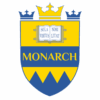In this globally recognized forum, Dr. Bujold shares insights from his doctoral research on biomimicry-inspired helmet innovation—a critical initiative addressing the alarming prevalence of traumatic brain injuries (TBIs) in military, industrial, and sports sectors. With over 27 years of R&D experience, 140+ projects, and 18 patents, Bujold explores how lessons from woodpeckers, whales, and bighorn sheep can lead to safer, more adaptive protective systems.
Dr. Bujold’s dissertation, titled “Traumatic Brain Injury: A Critical Analysis of How to Effectively Develop and Commercialize a Groundbreaking Innovation to Reduce the Risk of TBI,” explores the intersection of biomimicry, innovation management, and public safety. Drawing on nature’s evolved mechanisms—such as the shock-resistant anatomy of woodpeckers, the cranial geometry of dolphins, and the horn structure of bighorn sheep—his research proposes a new paradigm in helmet design focused not on energy absorption, but on geometric energy redirection. The work challenges conventional helmet testing protocols by emphasizing rotational and sub-concussive forces, which remain underrepresented in both regulation and product development. Through grounded theory and qualitative interviews with entrepreneurs, engineers, and TBI survivors, the study identifies critical barriers to innovation and proposes a replicable roadmap for translating biologically inspired concepts into commercial protective systems.
His proposed framework addresses the lack of disruptive innovation in the helmet industry and bridges gaps between science, design, and commercialization. As explained on the podcast, the key insight is this: nature doesn’t absorb impact—it redirects it.
The research goes beyond theoretical modeling to offer an applied framework for innovation, particularly in high-failure hardware categories such as personal protective equipment (PPE). It addresses key commercialization challenges—such as regulatory lag, investor misalignment, and the so-called “valley of death” between TRL 4–7—by integrating insights from product lifecycle strategy, startup dynamics, and biomechanical science. The result is a four-phase model that guides entrepreneurs from ideation through validation and growth, all while preserving scientific integrity and user-centered design. Bujold’s contribution lies not only in redefining helmet performance through the lens of nature, but in bridging the silos of research, engineering, and commercialization to reduce one of the most persistent and costly injuries in society today.



